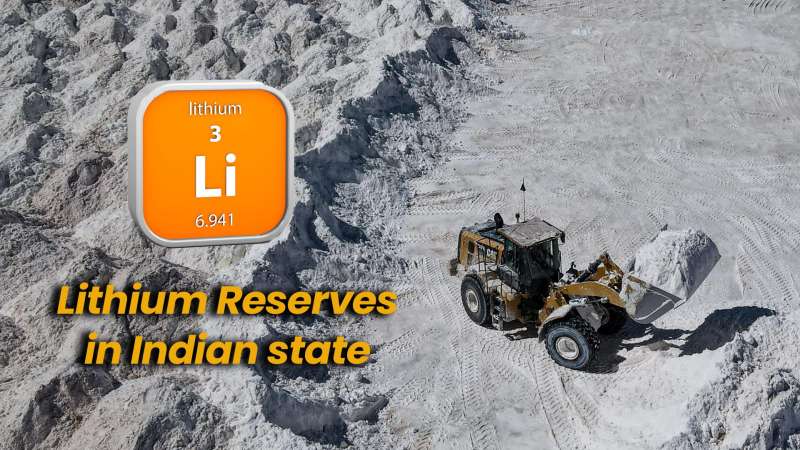

In a groundbreaking discovery, the Geological Survey of India found massive lithium reserves in Rajasthan’s Nagaur district, making it the second Indian state after Jammu and Kashmir to host this precious metal. The officials claim that the newly discovered reserves in Degana, Nagaur, have the potential to meet 80% of India’s lithium consumption, putting an end to the country’s reliance on expensive imports from China. This discovery can to boost Rajasthan’s economy and reduce China’s stranglehold on the global lithium market. Let’s explore this discovery in detail.
Location of Lithium Reserves in Rajasthan
The lithium reserves found in Rajasthan are in the Renvat hill of Degana and its surrounding areas, which were historically the suppliers of tungsten material to the country. Tungsten ore was first discovered on this hill by the British during World War I, and it was used for manufacturing war materials for the British army. Following independence, it was utilized in the production of surgical equipment and contributed to the energy and health sectors of the country.
However, due to China’s cheap export policy, tungsten exports from here became pricey in the 1990s, and eventually, the production was halted here. The hill was deserted, and the offices, houses, gardens, and schools built by GSI and other government officials were destroyed. But now, with the discovery of lithium reserves, the fate of Rajasthan and the country is expected to change.
About Lithium and its Significance
Lithium is a non-ferrous metal and the lightest metal on the planet and is an essential component in rechargeable batteries used in mobile phones, laptops, electric cars, and other electronic devices. Its ability to store chemical energy and convert it into electrical energy makes it a valuable metal for the energy sector. Due to the increasing demand for renewable energy, lithium’s demand has skyrocketed globally, commonly known as “white gold.”
The newly discovered lithium reserves in Rajasthan can transform the country’s lithium market, and if the World Bank report is correct, the demand for lithium will rise by 500% by 2050. This discovery is a significant step towards achieving India’s goal of becoming a self-reliant and sustainable economy, reducing its dependence on imports from China, and improving energy security.
Conclusion
The discovery of massive lithium reserves in Rajasthan’s Nagaur district is a game-changer for India’s lithium market. The potential to meet 80% of the country’s lithium consumption will significantly reduce India’s reliance on imports and improve its energy security. The discovery can also boost Rajasthan’s economy and provide new job opportunities for the local population. As the world transitions to renewable energy, the demand for lithium can rise, making the discovery even more significant. It is a step towards achieving India’s vision of a self-reliant, sustainable, and prosperous economy.


